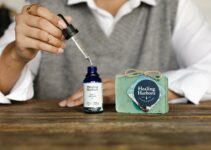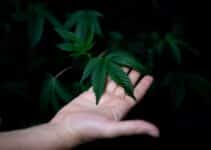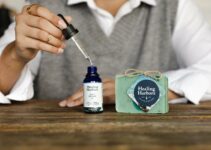I've discovered four effective strategies for diversifying crops with delta-8 hemp. By selecting complementary crop varieties, rotating crops for soil health, implementing intercropping techniques, and utilizing cover crops for diversity, farmers can enhance their agricultural practices. These tips not only promote sustainability but also contribute to improved yields and overall farm productivity.
Key Takeaways
- Pair Delta-8 hemp with nitrogen-fixing legumes like soybeans to enhance soil fertility.
- Rotate different crop varieties to prevent nutrient depletion and disease buildup.
- Implement intercropping techniques to optimize yield and soil nutrient utilization.
- Utilize cover crops alongside Delta-8 hemp to enhance soil health and productivity.
Selecting Complementary Crop Varieties
When diversifying crops with Delta-8 hemp, selecting complementary crop varieties is crucial for maximizing yield and minimizing risk. Crop pairing plays a significant role in achieving yield optimization. By carefully choosing complementary crops that have symbiotic growth patterns or complementary nutrient needs, farmers can effectively utilize resources and space, ultimately leading to higher yields. For instance, pairing Delta-8 hemp with nitrogen-fixing legumes like soybeans can enhance soil fertility, leading to improved hemp growth. Additionally, intercropping with certain vegetables can help suppress weeds and pests, reducing the need for chemical interventions. Understanding the interactions between different crop varieties is essential for successful diversification. It's imperative to conduct thorough research and consider factors such as soil compatibility, climate suitability, and market demand when selecting complementary crop varieties for diversifying with Delta-8 hemp.
Rotating Crops for Soil Health
To ensure optimal soil health when diversifying crops with Delta-8 hemp, rotating different crop varieties is essential for preventing nutrient depletion and disease buildup. Crop rotation is a fundamental practice for improving fertility and preventing disease in agricultural systems. By rotating crops, the soil's nutrient levels can be maintained, as different plants have varying nutrient needs and contributions to the soil. Additionally, rotating crops can disrupt the life cycles of pests and pathogens, reducing the buildup of diseases in the soil. For example, leguminous crops can fix nitrogen in the soil, benefiting subsequent crops, while also suppressing soil-borne diseases. Furthermore, crop rotation can enhance soil structure and microbial diversity, contributing to overall soil health. Therefore, implementing a well-planned crop rotation strategy is crucial for sustaining soil fertility and minimizing disease pressure when diversifying crops with Delta-8 hemp.
Implementing Intercropping Techniques
Intercropping techniques play a crucial role in maintaining soil health and maximizing overall crop productivity when diversifying crops with Delta-8 hemp. Implementing these techniques requires careful planning and consideration of various factors. Here are key aspects to focus on:
- Diverse Crop Combinations: Pairing Delta-8 hemp with compatible crops can help optimize yield and soil nutrient utilization.
- Spatial Arrangement: Efficiently arranging crops can aid in pest management by disrupting the habitat of pests and minimizing their impact on the hemp crop.
- Resource Utilization: Intercropping allows for better utilization of sunlight, water, and soil nutrients, contributing to enhanced yield optimization.
- Biological Pest Control: Intercropping with certain plant species can attract beneficial insects, aiding in natural pest management without relying heavily on chemical interventions.
Implementing these techniques strategically can lead to a more sustainable and productive farming system when cultivating Delta-8 hemp.
Utilizing Cover Crops for Diversity
As I consider the benefits of diversifying crops with Delta-8 hemp, utilizing cover crops becomes a key strategy to further enhance soil health and overall productivity. Cover crops play a crucial role in soil enrichment and pest management, contributing to sustainable agricultural practices. By incorporating a diverse range of cover crops alongside Delta-8 hemp, farmers can improve soil structure, increase organic matter, and enhance nutrient cycling. Moreover, cover crops act as a natural defense against pests, reducing the reliance on chemical pesticides. This approach promotes a balanced ecosystem that supports beneficial insects and microorganisms, leading to improved long-term soil health. The table below illustrates the potential cover crop options and their associated benefits:
| Cover Crop | Benefits |
|---|---|
| Legumes | Nitrogen fixation |
| Grasses | Erosion control |
| Brassicas | Pest suppression |
| Mustard | Nematode suppression |
| Radishes | Soil compaction reduction |
Frequently Asked Questions
What Are the Legal Regulations and Restrictions Surrounding the Cultivation of Delta-8 Hemp in Different States?
Legal regulations and THC limits vary by state for delta-8 hemp cultivation. Interstate commerce and cultivation licensing laws also differ. It's crucial to research and comply with the specific regulations in each state to ensure legal compliance.
Are There Any Specific Pests or Diseases That Commonly Affect Delta-8 Hemp Crops and How Can They Be Managed?
Pests like spider mites and hemp borers can harm delta-8 hemp crops. Integrated pest management and regular monitoring help control these pests. Disease control involves using resistant cultivars and practicing good agricultural practices to minimize the impact of diseases.
How Can Farmers Ensure the Quality and Purity of Their Delta-8 Hemp Crop to Meet Market Demands?
To ensure the quality and purity of my delta-8 hemp crop for market demands, I focus on rigorous quality control measures. Implementing advanced farming techniques and closely monitoring crop purity are essential for meeting market demands.
What Are the Potential Environmental Impacts of Cultivating Delta-8 Hemp and How Can They Be Mitigated?
Cultivating delta-8 hemp can impact the environment through soil degradation and water usage. To mitigate this, I focus on environmental sustainability by implementing soil conservation practices, such as crop rotation and cover crops, to maintain soil health and reduce erosion.
Are There Any Specific Harvesting and Storage Considerations for Delta-8 Hemp Compared to Other Traditional Crops?
Harvesting considerations for delta-8 hemp include timing to maximize cannabinoid content, and efficient drying methods to prevent mold. Storage considerations involve maintaining proper humidity levels and utilizing airtight containers to preserve potency.
Conclusion
In conclusion, diversifying crops with delta-8 hemp can have numerous benefits for soil health, pest management, and overall farm productivity. By selecting complementary crop varieties, rotating crops, implementing intercropping techniques, and utilizing cover crops, farmers can create a more resilient and diverse agricultural system. This approach can also lead to improved yields, reduced reliance on pesticides, and a more sustainable farming practice overall. As research in this area continues to develop, it is important for farmers to explore and implement these strategies for long-term success.





